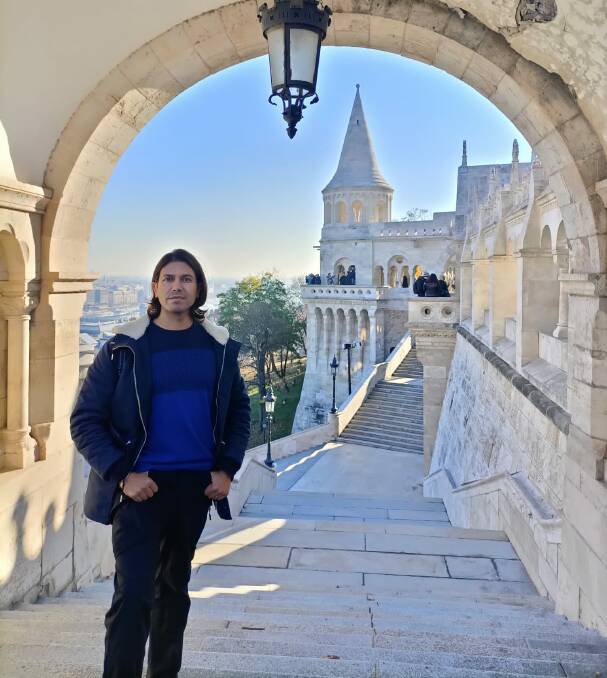Want the inside running on the Eternal City? Ask an embedded local.
Create a free account to read this article
$0/
(min cost $0)
or signup to continue reading
Sometimes a date with the Eternal City is an open invitation to drown yourself under the weight of dates and popes and emperors and battles and buildings. One of the best things I do in Rome is hook up with a guide recommended by a friend of a friend.

Luca Rocconi, co-founder of the Italy Tour Co, is waiting for me in the foyer of the new Bulgari Hotel Roma. He's taking me on what will turn out to be a five-hour, cobblestoned voyage around food and art. It's like browsing with a bestie. An email reminder has preceded him: "We will take a nice walk through the narrow streets of the historic centre, passing by the Spanish Steps, the Trevi Fountain, the Pantheon, Piazza Navona, Campo de' Fiori and Trastevere. Please don't eat a lot of breakfast at the hotel."
We start just off the arterial Via del Corso in pretty Via Vittoria, which is full of niche perfumeries that I will return to at dusk. We're heading for the famous Via Condotti and Caffe Greco, the oldest coffee house in town, built in 1760. It doubles as a history museum, preserved in grand 19th-century style, with wine-red tapestries, glass doors, mirrors, red upholstery and tiny round marble tables. The small, connected rooms are full of artworks - paintings, portrait medallions, busts and statuettes - by more than 60 artists, including landscape painter Vincenzo Giovannini, who contributed to the interiors.

Such a clientele. Painters, poets, composers, authors, playwrights. What was in the coffee! Rocconi says it was a favourite with Diana, Princess of Wales, who had a regular table down the back.
A coffee will set you back 8 euros ($13), or 2 euros ($3.20) if you stand at the bar. The cannoli will only be piped full of fresh ricotta when you order one.
It's fuel for a late summer jaunt around churches, mosaics, piazzas, food bars, spectacular sculptures and fountains, and atmospheric places to just sit and watch Rome tick. On a Monday morning, the Spanish Steps are all but deserted and so is the Trevi Fountain. Luca and I talk ancient plumbing, the cornetto vs the croissant, paintings, and the rivalry between architects Gian Lorenzo Bernini and Francesco Borromini. We chat about one of Rome's most macabre works of art in the Capuchin Crypt, beneath the church of Santa Maria della Concezione dei Cappuccini. Comprising five tiny chapels with dim light seeping through cracks and small fluorescent lamps, it contains the skeletal remains of 3700 bodies believed to be Capuchin friars buried by their order.
Sunsets come with buskers, musicians, pub crawls and shopping.
We go hunting for aqueducts. There's one in the basement of Rinascente, unearthed during the building of the glam department store, which opened in 2017. An almost 2000-year-old section of Aqua Virgo is one of 11 aqueducts that supplied ancient Rome. I become more than a little infatuated by Marcus Vipsanius Agrippa (63 BCE - 12 CE) and his love of infrastructure. The Roman general, statesman and architect was a friend, son-in-law and lieutenant to the first emperor, Augustus. On his watch, streets were repaired, the sewage system cleansed and baths, porticoes and gardens installed.
Thanks to an upgrade in the 15th century, Agrippa's pipeline continues to transport fresh water over 20 kilometres from its source outside Rome, passing under Villa Borghese and Piazza di Spagna before refreshing the Trevi Fountain with some 80,000 cubic metres of water a day.
When in Rome, look up, urges Rocconi. The city is dotted with hundreds of "Madonnelle", little shrines to the Madonna, hanging high on street corners. Most are from the 17th to the 19th centuries, adorned with canopies, fringes, swirls, volutes, columns and cherubs. Each is a small work of art and has a story to tell.
Read more on Explore:
Churches, though, have the mosaic market cornered. Those of the Basilica of Santa Maria in Trastevere are among the city's most stunning and are also significant for their art history. While the main mosaic is Byzantine in style, with rich saturated colour, a second of the mosaics represents scenes from the life of the Virgin Mary, dating back to the 13th century when the artist Pietro Cavallini was making his mark.
We arrive at the Basilica of Santa Maria in Trastevere via the Ponte Sisto bridge which spans the Tiber River. Built between 1473 and 1479 by Pope Sixtus IV, the bridge was part-funded by a tax on prostitution. There has in recent years been a revitalisation of Trastevere, where sunsets come with buskers, musicians, pub crawls and shopping.
Rocconi moved to Rome from Abruzzo in central Italy when he was 19. He studied the classics and speaks English, Chinese and Portuguese. In 2018, Rocconi and his cousin Valerio Fantinelli, who has worked in hospitality in Australia for more than two decades, established Italy Tour Co.
While he loves guiding tour groups, Rocconi says he likes nothing more than a one-on-one introduction. "This way," he says, "you are not just talking at people, but taking part in a conversation."
Church visits require sustenance. Rocconi knows where to buy the best mortadella focaccia in Campo de' Fiori. There will be slices of Margherita pizza whose colours - green (basil), red (tomato) and white (mozzarella) - nod to the Italian flag. An A4-size snack at Pizzeria Il Capriccio in Piazza Navona is more elaborate: eggplant, mushrooms, mozzarella, tomato and potato, each ingredient sliced mandolin fine.
From Trapizzino at Piazza Trilussa 46, we eat suppli, the Roman version of Sicily's arancini. But there's a sting in the tail.
Says Rocconi, 70 per cent of gelato in Rome is fake. Say no to neon! Pistachio, banana and mint are the best clues to authenticity: banana gelato should be creamy white not yellow; mint more white than green as it is essential oil being used not green leaves; and pistachio more brown than green.
He steers us into the tiny Otaleg for the real deal ... with a luscious tiramisu chaser.
TRIP NOTES
What: The Trastevere Food and Art Tour with Italy Tour Co.
How much: Starts at $110 per person if in a group of three; $160pp if a couple; or $300 if solo.
Explore more: italytour.com.au
The writer was in Europe as a guest of Princess Cruises.




